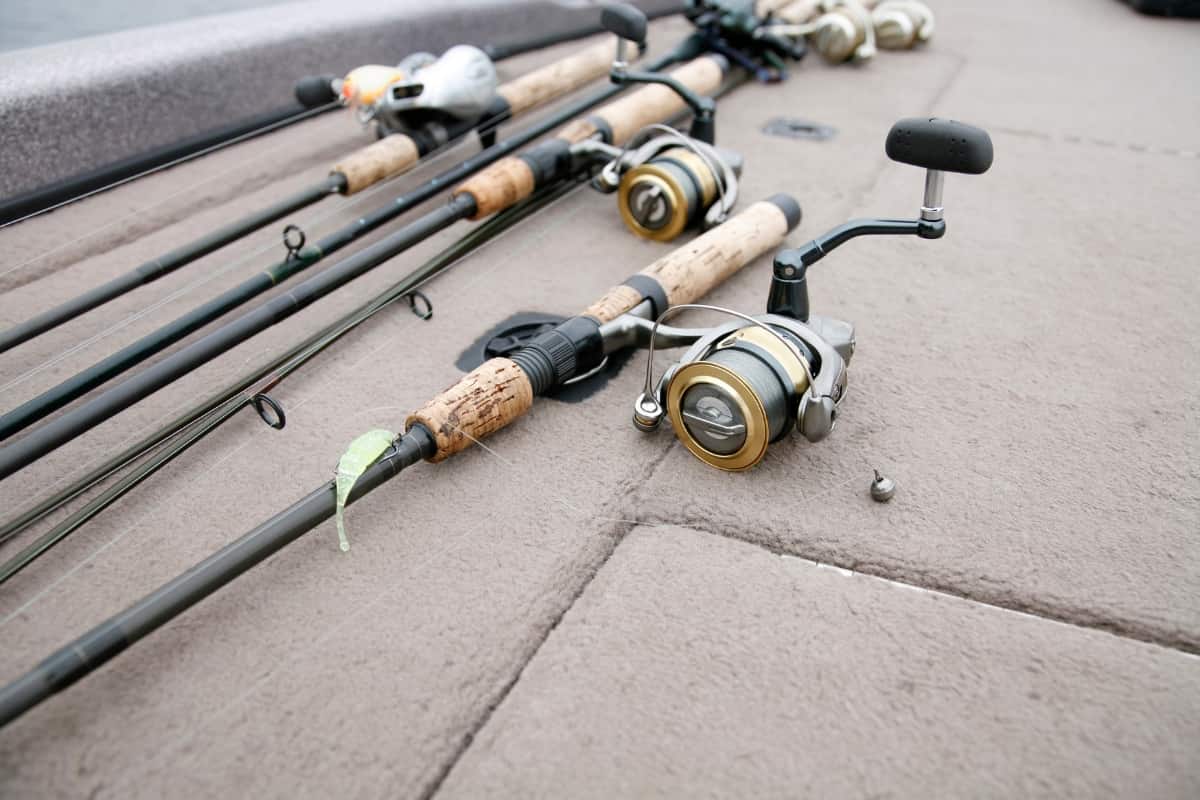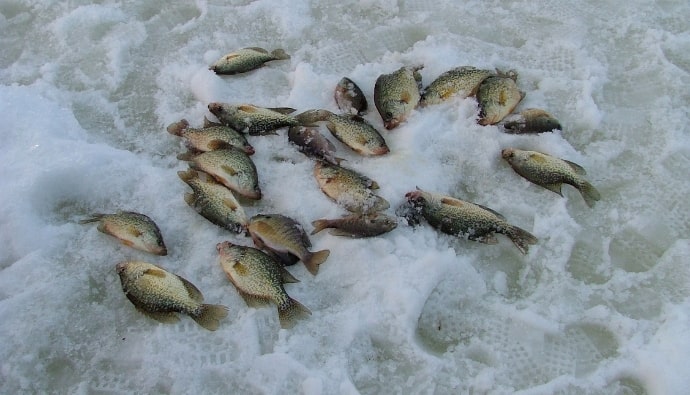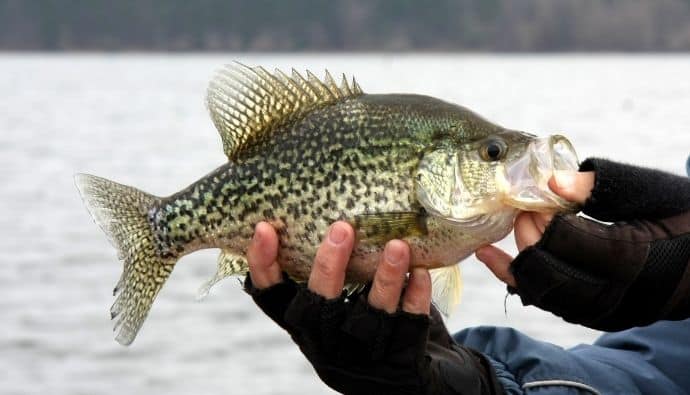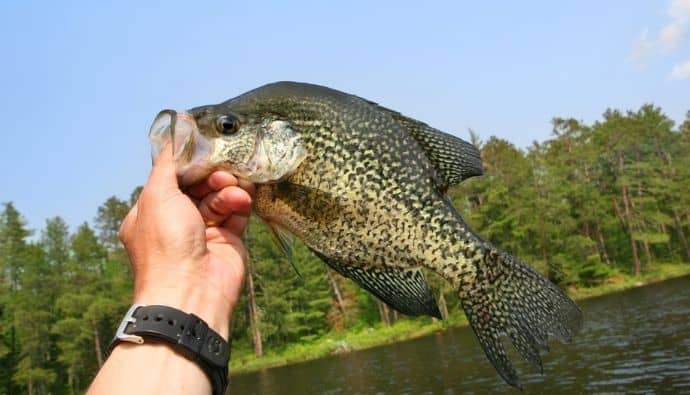Crappie is a type of fish that everyone who has fished in Southern waters will be familiar with. They are among the most exciting fish to catch and are a real treat to eat. However, catching crappie requires a lot of skill, the correct tackle, and a pinch of luck.
Jigs are perhaps the most popular and productive crappie lures. Given the abundance of jigs, it’s difficult to envision many days on the lake when one wouldn’t be the ideal tackle for sac-a-lait.
For those who have never fished with a jig, this article will provide a cursory overview of one of the most productive techniques for catching crappie.
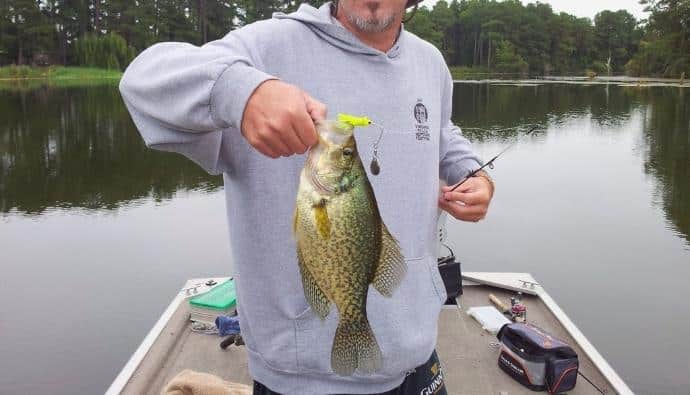
Jigs
What are Jigs?
Crappie anglers frequently employ jigs, which are two-part lures.
A jig head is a hook with a weighted, curved section and an offset eye. These may be found in various sizes, shapes, and colors and can be crafted from raw lead or painted wood.
Note: Those on a tight budget may opt for raw lead heads or to pour their own rather than purchase the more expensive painted versions.
The bait or lure is the second part of a well-executed jig. To fish with a jig head, attach any soft bait, such as a curly-tailed grub, minnow, or other plastic.
Several jigs have what appear to be blades or spinners at their apexes—the vibrations and flash of the blades mimic the action of a crankbait, which can increase bites.
A jig’s greatest strength is its flexibility; this comes from the fact that it is essentially a blank slate that may be rigged with anything the angle desires.
Measurements for a Crappie Jig
The weight of a crappie jig head is generally between 1/64 and 1/8 of an ounce. When fishing in muddy circumstances or at greater depths, some anglers prefer using heavier jigs, but the vast majority of anglers choose jigs in this weight range.
Knowing the depth and targeted species is crucial while deciding on a specific weight. The specifics of your situation will determine the jig, bait, and retrieve you utilize.
A heavier jig is better for quickly sinking to the bottom of the water column and fishing at an angle. When deciding on a jig weight, it’s also essential to think about the intensity of the wind and the distance you need to throw.
A larger jig isn’t always essential, although it is true that tightening and trolling both calls for additional weight on your rig.
A taught line is ideal to avoid missing hits when fishing with a jig. You won’t feel structure if your jig head is too small, and if the wind is messing with your line, you won’t feel the bites you should. In most cases, jig heads with a size of 1/8 are effective.
A smaller jig will be less likely to get hung up when fishing in heavy cover, even if a larger jig may seem to have more advantages at first. Anglers should use the smallest jig possible while fishing in clear water to limit any giveaways to the fish.
Types of Jig Lures
When it comes to jigging for crappies, there are four basic body types that fishermen utilize. These four baits are incredibly effective across almost all scenarios and are composed of grubs, tubeworms, Maribou, and minnows.
- Grubs have a fat, round body and a long, paddle-like tail for propulsion in water.
- Tubes come with a bullet-like head and fringed tail similar to a skirt.
- Marabou jigs are hybrid lures that include both fly and jig techniques. The long skirt and hairy design provide much movement while jigging them softly.
- Minnows are artificial fish that mimic their natural counterparts’ size, shape, and movement.
All of these patterns share a similar characteristic: motion. Motion and activity are essential, whether it is the writhing tail of a grub, the dancing tentacles of a tube, the fluffy hair of a Maribou, or the jiggling fluke of a minnow.
Selecting the Right Colors for Crappie Fishing
On days when crappie prioritizes color, they may be picky eaters.
It’s frustrating when you bring one color of lures and are limited to it for the duration of your time on the water, returning home empty-handed.
Take a look at the color of the water and pay attention to the depth and surrounding habitat, as these matter more than you think.
Crappie has good eyesight in clean water, so picking colors that mirror those seen in nature is vital. To get the best results, stick to muted colors or natural tones, but don’t rule out the possibility that brighter hues will elicit some response. In murky or muddy water, fish will only bite at the most brilliant colors.
The deeper a lure goes into the water column, the color progressively fades away.
Crappie is commonly caught in extremely shallow water, so picking the proper color is crucial. The most successful bait will always be a natural one that stands out at all depths.
Two primary colors work well to cover the entire water column collectively.
Chartreuse
Chartreuse is a hotly contested color, with many decrying its non-natural color as a turn-off while others tout its ability to stand out like a lighthouse in a storm. It can be fished pretty deep without losing its vividness and is just as effective in clear and murky water as white because of its strong visibility and contrast features.
Note: when fishing chartreuse, a skirt is an incredibly effective component for both its movement and action.
Black
Because of its high visibility in clear water, black is an excellent choice for fishing in shallow areas, regardless of the time of day or the intensity of the sunlight. It has a great profile when viewed from below, and overall black jig heads work well in most instances.
Note: Outside of these, watermelon seed variations and several shades of purple can be incredibly effective jig colors. Skirts that are neon or with reflective flecks also work well.
How to tie the proper knots for a jig
Jigs should be hung horizontally from your line even while jigging vertically. For optimal performance, the knot must be placed precisely where the eye is.
You can tie a Trilene knot, a Palomar knot, or even a simple loop knot to attach your jig to your line.
Seasons
The best seasons for vertical jigging are the height of summer and the beginning of October.
Vertical jigging is a technique that is often overlooked for catching crappie in the summer and fall. Crappie, when the water temperature in their lake rises, will go to another lake that is cooler. Also, when the summer wanes and falls approaches, they will move away from the shallows.
Jig Techniques
Slip Floats:
A bobber without clamps to affix the line in place, a slip float is an easy way to jig over structure.
Anglers with a fishfinder can probably spot them swimming around weeds or brush piles at about 10 feet. Park the boat and gently jig them up from cover, using just enough distance not to spook them yet maintaining an easy casting distance.
Shallow Running:
During the spring, when spawning occurs, a simple jig head with a lure of your choosing works well on a slow retrieve. This setup is excellent for covering large areas of water or getting around.
Anglers with a fishfinder can probably spot them swimming around weed beds or brush piles in the water of about 10 feet in depth. Park the boat and gently jig them up from cover, using just enough distance not to spook them yet maintaining an easy casting distance.
Trolling:
From the boat, affix rods with rearward-facing lines and baited jigs. Let line out and run at a slow to moderate speed, dragging the strings behind the ship in the upper to middle levels of the water column.
Late spring and summer are prime times to cast a spider rig because crappie moves from deeper water to shallower water to breed in the early spring. Still, when the water warms, they will return to the depths, dispersing over their habitat and forming schools at various levels of the water column.
At that point, it’s time to break out the fish finder. Otherwise, you’ll spend hours searching the water column, often to no avail.
Spring and summer are the ideal time of year for trolling, and spider rigging will give you the best chance of catching something.
For big bodies of water with varying depths and hues, spider rigging is a very successful technique. Crappie needs a wide variety of baits, and the spectrum of appeals may be increased by running a swarm of jigs at varying depths using long rods rigged across multiple rod holders.
When working your way across a lake with a spread of rods, you will cover much water in a short time while simultaneously laying out a buffet of jigs for the crappie.
To effectively troll with jigs, you’ll need long rods up to 12 ft. Since each rod type has a different bow and reaction to hooksets, using a variety of rods might make it more difficult to discern the motions of the rod’s tip and line as a result of strikes. Solid rod holders are a must for trolling, so ensure your boat is equipped before setting out.
Jigging for crappie can be an enjoyable experience for anglers of all skill levels. Whether trolling, shallow running or working a slip float over a stump, jigging for crappie is a good time. Remember to select colors that will work well in the water conditions you’re operating in and select weights for jigs that complement the depths you’re working at.
It’s essential to consider what season you’re angling in, as this may dictate the technique used. Finally, remember to bring a diverse group of jigs as both the weight, body type of the lure, and color can make all the difference in the success or failure of your fishing trip. As always, good luck and stay safe out on the water.

 Facebook
Facebook YouTube
YouTube